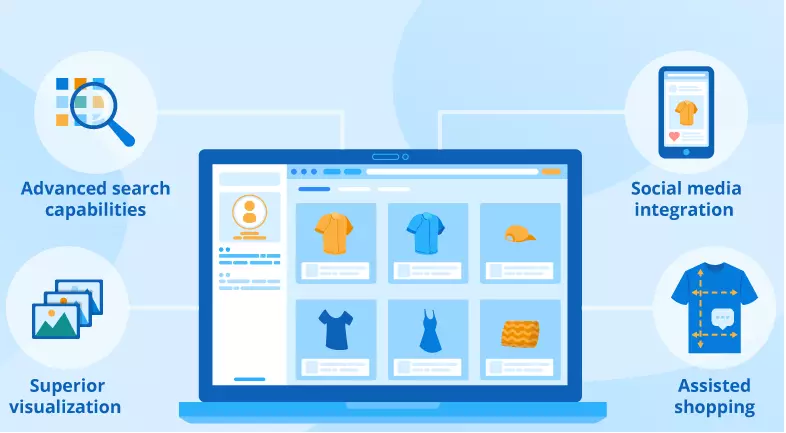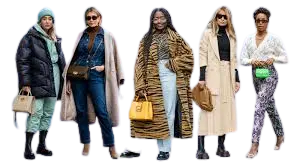E-commerce in Fashion Industry: Importance, Trends, Facts, Challenges and Opportunities
Introduction
We all love online shopping, and why not when you get your favorite clothes with just one click? As I am writing now, E-commerce has already entered in Fashion industry. And it’s everywhere in the world, and this entry is very successful, working for retail clothing brands and consumers. Here are talking about E-commerce in the Fashion Industry: its Importance, Trends, Facts, Challenges, and Opportunities.
This is an era of the Fashion industry is E-commerce based mainly. So the fashion e-commerce sector is booming after the COVID-19. However, the landscape is dynamic, and new developments continue to shape the industry. The COVID-19 pandemic accelerated the shift towards online shopping, making e-commerce even more central to fashion retail.

Importance of E-commerce in the Fashion Industry
- Global Reach: E-commerce has enabled fashion brands to reach a global audience, breaking down geographical barriers. Shoppers can explore and purchase items from international designers without leaving their homes.
- Convenience: The convenience of online shopping cannot be overstated. Shoppers can browse catalogs, read reviews, and make purchases 24/7, eliminating the constraints of traditional store hours.
- Personalization: E-commerce platforms leverage data and algorithms to provide personalized shopping experiences. Recommendations based on past purchases and browsing history enhance customer satisfaction.
- Cost Efficiency: For fashion brands, operating an online store can be more cost-effective than maintaining physical stores. Reduced overhead costs and the ability to reach a larger audience contribute to higher profit margins.
- Product Availability: You can bring all types of Fashion items under one umbrella just by getting a contract with the suppliers. So any order from the consumer, you give delivery that is not possible in a physical shop selling live.
E-commerce Trends in the Fashion Industry
- Augmented Reality (AR) and Virtual Try-Ons: Fashion brands are implementing AR technology, allowing customers to virtually try on clothing items. This enhances the online shopping experience by providing a better sense of fit and style.
- Sustainability and Ethical Shopping: Consumers are increasingly concerned about sustainability. E-commerce platforms are responding by promoting eco-friendly and ethical fashion choices.
- Mobile Shopping: Mobile devices are the primary means of accessing online stores. Responsive design and mobile apps have become crucial for fashion e-commerce success.
- Direct-to-Consumer (DTC) Brands: DTC brands are gaining traction, bypassing traditional retailers to sell directly to consumers. This approach allows for better control over branding and customer relationships.
Facts About E-commerce in the Fashion Industry
- Growth: The global fashion e-commerce market is projected to reach $1.0 trillion by 2025, according to Statista, indicating significant growth potential.
- Consumer Behavior: Approximately 73% of fashion shoppers prefer to discover new products online rather than in physical stores, as reported by McKinsey & Company.
- Returns Challenge: E-commerce fashion faces the challenge of high return rates, averaging around 30%, due to issues like sizing discrepancies.
- Price vs Quality vs Expectation: Now a sick competition started among the e-commerce companies to give products a lower prices. Consumers have high expectations of lower prices of clothes and finally getting lower quality clothes puts them in a dilemma. This makes a negative impact; a tough thing to keep balance among Price vs Quality vs Expectation.
Challenges in Fashion E-commerce
- Competition: The online fashion market is highly competitive, with numerous brands vying for consumers’ attention. Standing out and building brand loyalty can be challenging.
- Sustainability: While sustainability is a trend, it’s also a challenge. Meeting eco-friendly standards and practices can be costly for fashion brands.
- Supply Chain Disruptions: The pandemic exposed vulnerabilities in fashion supply chains. Managing disruptions and ensuring timely deliveries remain challenges.

Opportunities in E-commerce Fashion
- Innovative Technologies: Embrace emerging technologies like AI for personalized recommendations and virtual try-ons to enhance the shopping experience.
- Sustainability Initiatives: Invest in sustainable practices and communicate them effectively to attract eco-conscious consumers.
- International Expansion: Consider expanding to new international markets to tap into a broader customer base.
Conclusion
In conclusion, e-commerce has become the lifeblood of the fashion industry, offering consumers unparalleled convenience and accessibility while presenting fashion brands with opportunities to reach a global audience. E-commerce has revolutionized the fashion industry, offering convenience, global reach, and personalization. As technology continues to evolve, we can expect further innovations and enhancements in the way we shop for and experience fashion online.


